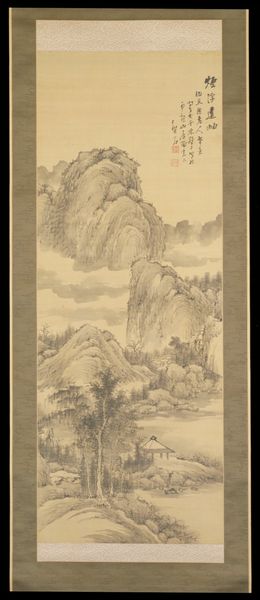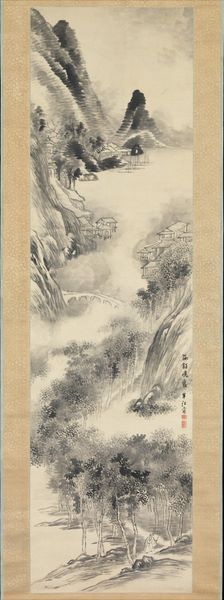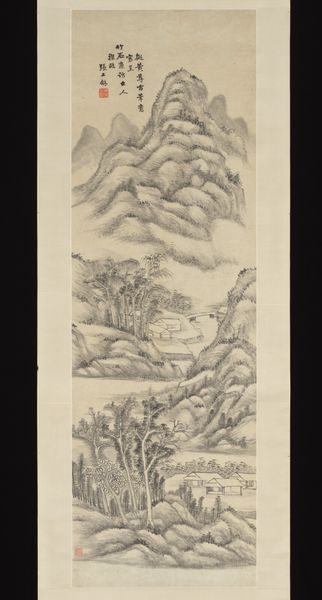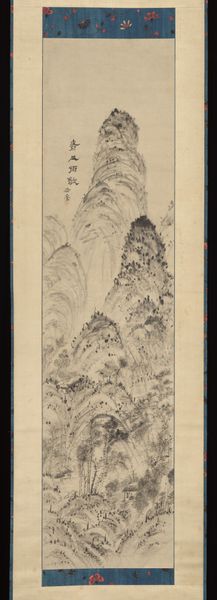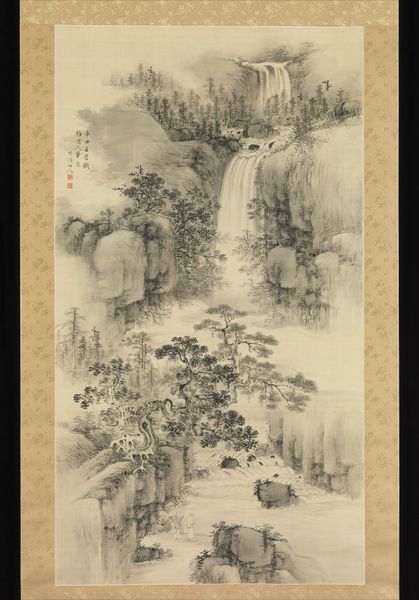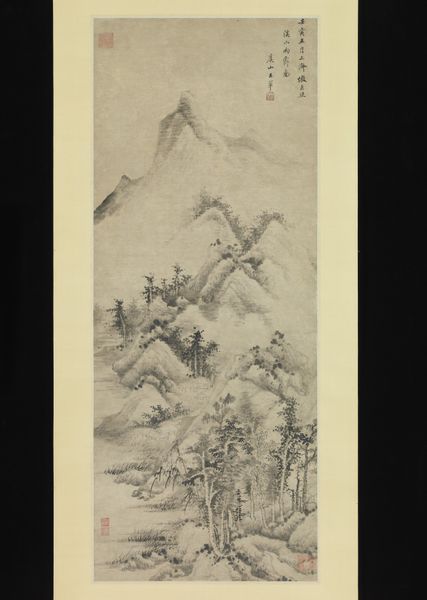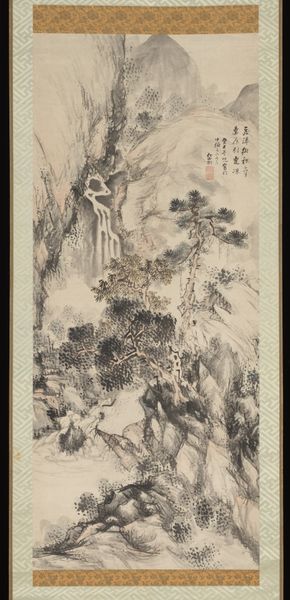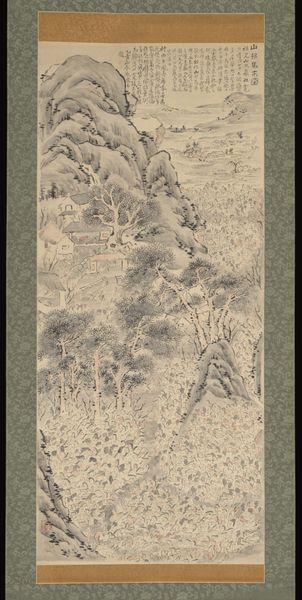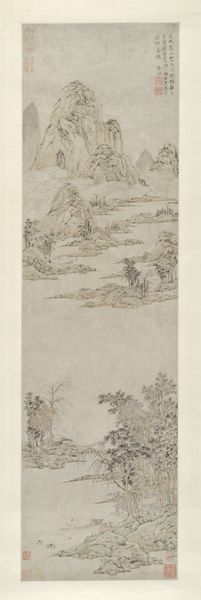
hanging-scroll
#
pencil drawn
#
charcoal drawing
#
japan
#
hanging-scroll
#
carved into stone
#
pencil drawing
#
earthy tone
#
tonal art
#
remaining negative space
#
mixed medium
#
pencil art
#
watercolor
#
calligraphy
Dimensions: 54 5/8 x 19 5/8 in. (138.75 x 49.85 cm) (image)
Copyright: Public Domain
Curator: Looking at "Misty Landscape," created in 1878 by Wang Yin and displayed here in the Minneapolis Institute of Art, I’m immediately drawn to the atmosphere it evokes. There’s a soft, ethereal quality achieved through ink and light washes, typical of the Japanese hanging-scroll style. Editor: It's interesting how that ethereal quality simultaneously calms and unsettles me. The deliberate emptiness of the space feels heavy, pregnant with unseen narratives, reflecting perhaps the instability and societal shifts of its time. The lingering shadows cast a long and dark mood upon the depicted rural environment and people Curator: I see what you mean. Shadowy tones tend to emphasize this effect. The artist, through skilled application of ink washes, builds a dialogue between the concrete forms of mountains and trees and the transient nature of mist, symbolizing perhaps the elusive search for permanence within the natural world. Wang uses an amazing and impressive form of linear and aerial perspective within an asymmetric pictorial space! Editor: And consider those small human figures in their fragile boat. What did they see? How has rapid societal modernization impacted their world, their relation to natural resources and the world's population growth rate, which have placed new demands on nature? How does their way of life compare to what’s valued now? Are they merely elements in a pretty picture? Curator: No, their presence is crucial. The figures in traditional Asian landscape painting remind us of our place in the cosmic order. Like small cogs on a very large clock, we can easily get misplaced within it. So in my reading their figures also reinforce the sublime power of nature, while these elements, like the pine trees are indicators of moral character in line with the Literati tradition. This reflects Confucian beliefs as a microcosm, highlighting how moral men are pillars of society during dark times. Editor: Right. But let’s be real; that perspective tends to downplay their real-world challenges. Who gets to define the good? And at what cost? Perhaps seeing the ink and landscape style through an eco-critical lens allows us to reveal something, while making art more approachable and even relevant in its time! Curator: Maybe…it's a beautiful example of what has been called "sumi-e," literally, ink picture. Editor: A method and tool in seeing our place. Curator: Or seeing something from another's place.
Comments
No comments
Be the first to comment and join the conversation on the ultimate creative platform.
